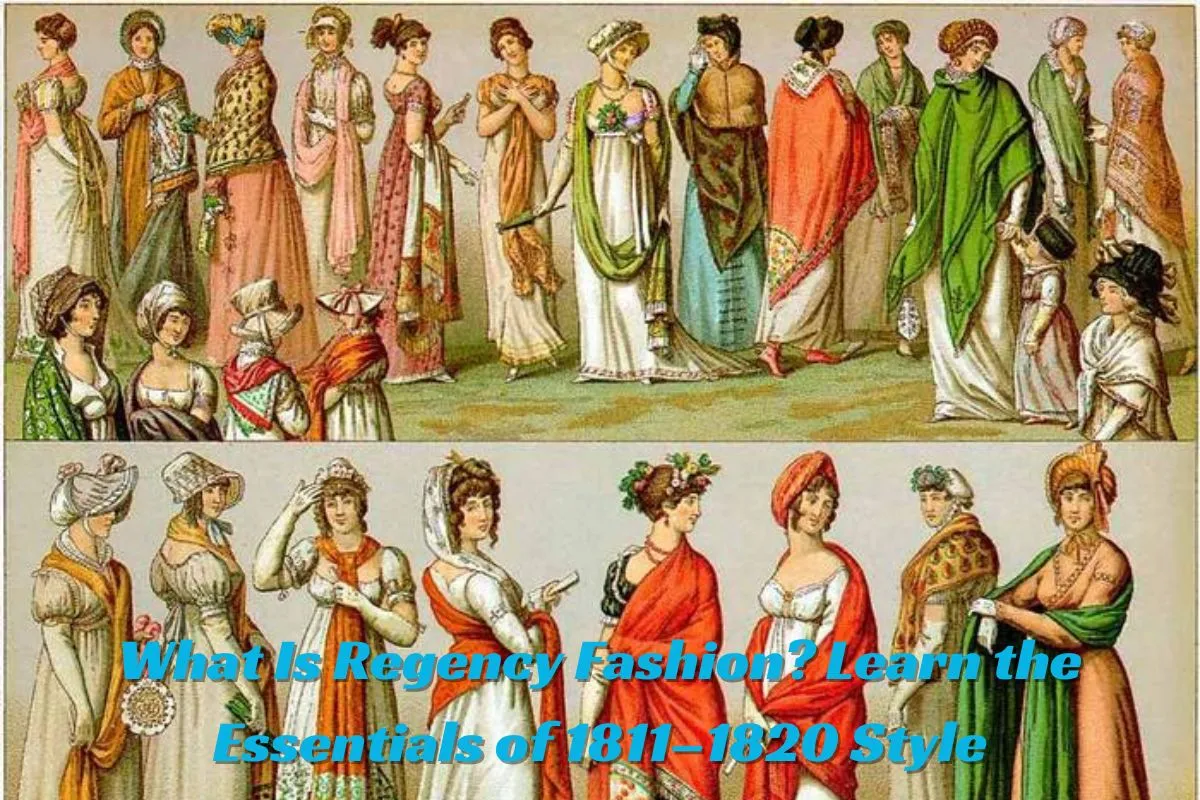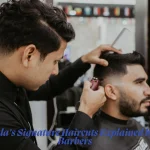Regency fashion refers to the distinctive styles worn during the British Regency period, spanning roughly from 1811 to 1820. Marked by elegance, simplicity, and classical influences, Regency fashion defined a transformative time in clothing history. Moving away from the ornate Georgian look, this era embraced cleaner lines, high waistlines, and lighter fabrics. Whether you’re a historical fashion enthusiast or a fan of Jane Austen’s novels, understanding Regency era clothing offers a glimpse into a time when fashion was as much about status as it was about personal refinement.
In this guide, we’ll walk through the essentials of Regency fashion—from empire waist dresses and cravats, to pelisse coats, Spencer jackets, and accessories like bonnets and reticules. Let’s step into the stylish world of early 19th-century fashion.
The Historical Context of Regency Era Clothing
The Regency period was a short but influential time in British history, marked by the rule of the Prince Regent (later King George IV) from 1811 to 1820. Social changes, the Napoleonic Wars, and literary influences like those of Jane Austen all helped shape the fashion of the time.
While the Georgian era favored elaborate gowns and powdered wigs, Regency fashion embraced neoclassical fashion ideals inspired by Ancient Greece and Rome. Clothing became lighter and more natural, reflecting a desire for comfort, grace, and intellectual elegance.
Women’s Fashion: Lightness, Line, and the Empire Silhouette
Perhaps the most iconic aspect of Regency women’s attire is the empire silhouette. Characterized by a high waistline just below the bust and a long, flowing skirt, this style highlighted the natural form rather than hiding it beneath layers.
Key Garments and Trends:
-
Empire Waist Dresses: Made of soft fabrics like muslin, these dresses created a romantic and graceful look, often in pale colors and minimal embellishment.
-
Chemisettes: These decorative undershirts were worn under low-cut gowns to provide modesty while still showcasing elegance.
-
Pelisse Coats and Spencer Jackets: Outerwear became essential, particularly when taking promenades. The Spencer, a cropped jacket, was especially fashionable.
-
Puffed Sleeves: These added volume and drama to the upper silhouette while maintaining a delicate appearance.
-
Flat Slippers: Women’s shoes during this time were soft-soled and inspired by ballet, adding to the flowing aesthetic.
Men’s Fashion: Structure, Elegance, and Military Influence
While women’s clothing aimed for softness and grace, Regency men’s fashion emphasized tailoring and masculinity. Military campaigns, especially the Napoleonic Wars, had a strong influence on civilian men’s dress.
Essential Pieces:
-
Tailcoats: Fitted through the body and cut away at the front, tailcoats were worn both day and night.
-
Breeches and Trousers: Breeches were still common, though trousers were rising in popularity.
-
Cravats: These long strips of cloth tied around the neck were both functional and expressive, often worn in complex knots.
-
Waistcoats: Often colorfully embroidered, waistcoats added flair and depth to an outfit.
-
Top Hats and Opera Gloves: Accessories played a crucial role in finalizing a gentleman’s look.
Accessories: Small Details, Big Impact
No discussion of 1811–1820 fashion trends would be complete without mentioning the era’s love of accessories. These small additions often revealed a wearer’s status, taste, and personality.
For Women:
-
Reticules: Small, decorative handbags that replaced bulky pockets.
-
Bonnets: Often tied with ribbons under the chin, bonnets protected delicate complexions while serving as a statement piece.
-
Gloves: Long opera gloves were essential at formal events, contributing to the overall elegance of a lady’s ensemble.
For Men:
-
Cane or Walking Stick: A gentleman rarely left the house without one.
-
Pocket Watches: Tucked into waistcoats and attached with a chain, they symbolized both style and punctuality.
Fashion in Literature and Society
Jane Austen fashion is a popular lens through which many people explore Regency fashion silhouettes. Her novels describe clothing not just as fabric but as social language. Whether a character wore muslin or silk, had a new bonnet or an old gown, these details revealed class and character.
Additionally, fashion as a social indicator was vital in this period. A woman’s ability to keep up with styles—or a man’s ability to afford tailored coats—spoke volumes about their societal standing.
Regency Fashion Revival in Modern Times
Thanks to films, historical series, and social media, Regency fashion revival is making waves. The Netflix hit Bridgerton, for example, has inspired renewed interest in high-waisted gowns, empire waistlines, and ornate accessories.
Modern fashion brands are now incorporating elements like puffed sleeves and floral muslin gowns into contemporary lines, showing how timeless and versatile early 19th-century fashion can be.
How to Recreate a Regency Look Today
Whether you’re headed to a Jane Austen ball, participating in a historical reenactment, or just inspired by the elegance of Regency style, it’s easier than ever to recreate the look:
-
Start with an empire waist dress—preferably in a neutral, soft fabric like muslin or cotton.
-
Layer with a Spencer jacket or pelisse coat for authenticity.
-
Add accessories: a reticule, gloves, and a bonnet or ribboned headpiece.
-
Finish the look with flat slippers and natural, curled hairstyles.
For men, a tailored tailcoat, high-waisted trousers, and a neatly tied cravat will instantly channel the Regency gentleman aesthetic.
Conclusion: Why Regency Fashion Still Matters
So, what is Regency fashion? More than just a trend from the past, it’s a fascinating blend of history, art, and social commentary. From neoclassical influences to Jane Austen’s world, the Regency fashion era (1811–1820) gave rise to silhouettes and styles that continue to influence how we think about elegance and identity in clothing.
Whether you’re a history buff, a fashion lover, or someone seeking timeless inspiration, exploring the world of Regency fashion opens the door to a captivating past that still speaks to our modern style sensibilities.




